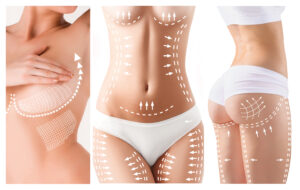Postoperative lymphatic drainage in Alpharetta, Georgia
Postoperative Lymphatic Drainage
Enhance recovery with a post operative lymphatic drainage to reduce pain, swelling, lymphedema, and scar tissue formation.

It is equally important to invest in your post operative lymphatic drainage care to achieve the maximum results.
Post surgical lymphatic drainage is a crucial treatment for enhancing recovery after surgery. It helps reduce pain, swelling, inflammation, fibrosis, and lymphedema, accelerating the healing process. This gentle, non-invasive therapy supports improved circulation and lymphatic flow, ensuring optimal recovery and reducing the risk of complications following surgery.
All surgeries produce swelling to some extent because it is part of the body’s normal healing process. A one-hour Lymphatic drainage is recommended twice weekly during the first month of recovery. However, the postoperative Lymphatic Drainage care begins as early as 3 or 4 days after the procedure specifically when the incisions are closed, or in a tummy tuck the drainage tubes are removed.
For tummy tuck procedure is recommended to start at the second week or when the drainage is removed. We use effective techniques to help reduce negative symptoms post-surgery.

During a cosmetic surgery, pathways become temporarily congested causing excess cellular debris, metabolic waste dead cells, and fluid that accumulate in the tissue leading to swelling and discomfort. Not only the fatty tissue is removed during liposuction but also lymph vessels embedded in the fatty tissue are removed during this invasive procedure.
Benefits of preparing your body for a surgery:
Pre-Operative Lymphatic Drainage
- Prepare the tissue for the surgery by removing excess water, bacteria, and metabolic wastes.
- Facilitate the immune system by accelerating the production of lymphocytes.
- Prepare patients better for the surgery-reduce oedema prior
- Provide education prior on swelling management
- Potential to get patients better faster with less side-effects, less pain meds.
- Induce a state of relaxation.
Manual Lymphatic Drainage treatments are recommended one to two treatments prior to surgery; ideally the week before surgery.
Benefits of Post-Operative Lymphatic Drainage


Postoperative recovery Lymphatic Drainage is highly recommended to anyone undergoing a plastic surgery, orthopedic or lipedema liposuction.
- Alleviate post-surgical swelling or edema,
- Promotes wound healing, minimizes bruising
- Reduce pain
- Prevents the formation of fibrosis or keloid scars
- Stimulates fluid circulation and promote urination
- Stimulates lymphatic “rerouters”
- Stimulate the immune system and help prevent post-surgical infections
- The therapists provide much needed psychological support through recovery phase
WHY DO I NEED A QUALIFIED THERAPIST FOR THE MANUAL LYMPHATIC DRAINAGE (MLD)- VODDER TECHNIQUE?
Finding a properly trained MLD “Vodder Technique” therapist is important since this technique requires an extensive level of study beyond what is covered in traditional massage therapy programs. MLD therapists are trained through a rigorous, exclusive education in the lymphatic system. For post-surgical care, we recommend a licensed Massage professional who is specially trained and certified in the Manual Lymph Drainage Vodder technique at least 40 hours certification.
Note: “Lymphatic Drainage” is NOT a massage. We do not drain any fluids nor touch any incision site. We simply work using the Lymphatic system anatomy to direct the excess fluid back towards the lymph nodes to reduce build-up and swelling.

What to do with scars, fibrosis or lumps that form post-surgery?
Fibrosis is a common complication after surgery, particularly following aggressive liposuction, and can impact your final results. It often develops in areas such as the flanks, upper abdomen, and legs, especially when liposuction is uneven or too aggressive. Post surgical lymphatic drainage is an effective treatment to help reduce fibrosis, improve lymphatic flow, and promote smoother healing, ensuring better outcomes after surgery.
Fibrosis starts developing during the first month and has a distinct appearance at first, you may feel some lumps, then you will notice that they get thick and hard, and you may feel pain in the area. Fibrosis needs to be treated as soon as you notice the hard lumps under the skin, the longer you wait to see a professional the more difficult to treat it.
To avoid fibrosis development, it’s very important to start your Postoperative Manual Lymphatic Drainage as soon as possible, wear your compression garment 24/7 for the first 2 months to prevent the accumulation of fluid to heal properly and faster.


What is the best Treatment for Fibrosis?
Fibrosis treatment with Hivamat or Deep oscillation therapy is designed to help you recover fast and help reduce scar tissue and uneven skin. The treatment is tailored based on your needs.
Seromas after Plastic surgery
There are many more complications after cosmetic surgery, and seromas is one of them. A seroma is a collection of serum (also known as lymph fluid) within a cavity inside the body. In a few words, a seroma is a fluid-filled pocket that may appear after surgery. It can be prevented and treated with Manual Lymphatic Drainage (MLD).
Some cosmetic surgeries such as tummy tuck are more prominent to developing seromas due to the nature of the procedure. Other common cosmetic surgery that results in seromas include:
- Liposuction or body contouring
- BBL or Buttocks lifts
- Breast enlargement
- Mastectomy
- Abdominoplasty
- Excessively aggressive liposuction
Why do I have to wear compression garments or fajas?
Compression garments play an important role in proper healing after liposuction. After the procedure, a compression garment will most likely need to be worn immediately and for several weeks after as the initial recovery process takes place.
Here some good reason why to wear a compression garment or faja:
- The compression garment controls postoperative swelling: Swelling, or tissue oedema, results from a complex balance of forces on the fluids in your body.
- It prevents collections of fluid: when fat is removed, space is left behind. The same forces that cause swelling will tend to cause fluid to collect in this space leading to pockets of clear fluid known as seromas.
- It helps to improve the contour and final appearance: The same space that allows fluid to collect allows the skin to slide back and forth over the underlying deep tissues and this can lead to a wrinkled skin appearance.
- Compression distributes scar tissue improves scarring, and it helps to organize the collagen fibres as these scars form causing it to be softer, earlier.
- Improves movement – Wearing a compression garment after surgery can make it easier to move around and maintain your posture.
